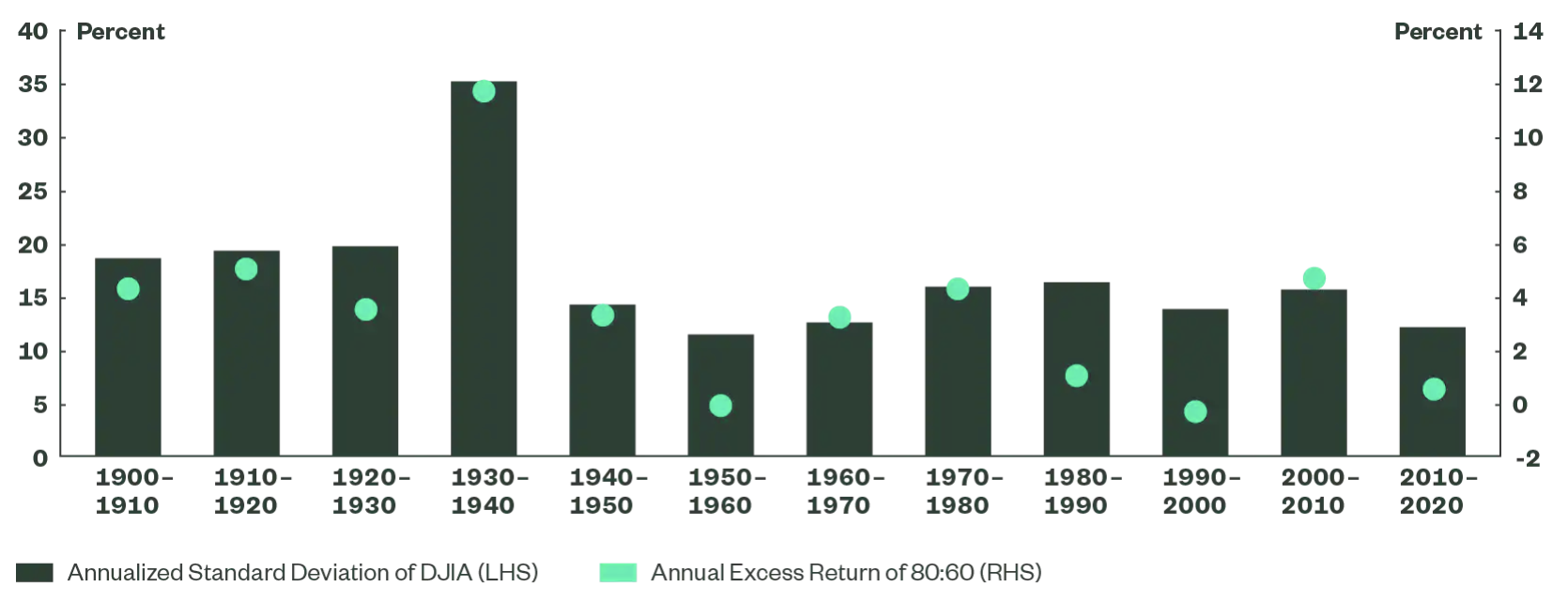Downside protection: Why it matters for all markets
Even the most prescient investor would have been hard-pressed to predict the path of markets since the start of the pandemic. Recent simultaneous drawdowns in equity and fixed-income markets have been all the more surprising because they followed a decade marked by unusually low volatility and remarkably consistent positive returns. We believe that the “Great Moderation” period is clearly over, with central banks less likely to backstop markets as they fight inflation and look to reduce their balance sheets.
The “new normal” higher-volatility environment should still provide opportunities for equity investors, but it will also likely feature deeper drawdowns and shallower (less V-shaped) recoveries. Importantly, actively managing the risk of the current environment will require proven downside protection strategies.
Investors should consider downside protection strategies not only during uncertain markets, marked by heightened volatility, but also during all other market cycles. Large drawdowns happen frequently and unexpectedly and can take time to recover from (see Figure 1). Downside protection, we believe, is an effective tool both from an offensive and defensive perspective — one that investors should consider for their portfolios across all market cycles.
Figure 1: Evolution of the Drawdown
S&P 500 Price Return Index, September 1929–September 2022

Win by Not Losing
Downside protection is usually seen as a purely defensive positioning — protecting against losses and preserving capital. But it should also be seen as an offensive approach: if investors can limit losses during a significant market drawdown (preserving “dry powder”), they can then re-allocate that capital toward riskier assets after the drawdown, benefiting from rising return premiums. Downside protection’s defensive perception has discouraged some institutions from using these strategies, but there are effective approaches that enable investors to stay protected and capture the growth potential of equity investments. Two are detailed below, and we recommend a structured approach to considering, discounting, and eventually choosing between approaches.
Defensive Equities
It is important to maintain a long-term perspective on defensive strategies because, for example, market performance since the Global Financial Crisis (GFC) has been consistently positive. One way to gain this perspective is to use the long-term characteristics of an 80:60 defensive equity strategy and proxy its long-term performance against the historical returns of the Dow Jones Industrial Average (DJIA). The 80:60 concept — trying to capture 80% of the market upside and to participate in only 60% of the market downside — has been largely realized in the long-term performance of leading defensive equity strategies.
A review of the performance of the 80:60 concept going back to 1900, by decade, shows that in all but three of the past twelve decades, investing in an 80:60 strategy would have delivered outperformance over the DJIA Index. Furthermore, the level of outperformance has generally been greater in more volatile environments (such as the one we are experiencing).
Figure 2: Excess Returns of an 80:60 Strategy versus the DJIA, by Decade

This is not surprising, as previous research has shown that, over the long term, strategies with lower volatility objectives have superior returns — generally because investors’ behavioral bias toward taking on the riskiest assets drives high volatility (while suppressing long-term returns).
In an up-market cycle, investors get overly optimistic and take on excessive risk, driving up asset valuation in the process. Excessive valuation eventually becomes unsustainable, leading to a correction and downward pressure on asset pricing. In a down-market cycle, the pendulum swings to the opposite side, leading to excessive pessimism on asset pricing and driving down asset valuation (but setting the stage for eventual price recovery).
Presently, as investors face the prospect of shrinking central bank balance sheets and restrictive monetary tightening to combat inflation, we believe they should actively consider how defensive strategies fit into their asset allocation.
Volatility Targeting Strategies
Another downside protection approach involves choosing an appropriate risk level (or target) and then switching between different levels of risky and non-risky assets (e.g., cash) to maintain the target risk level. In a Dynamic Asset Allocation (DAA) process, the allocation between risky and non-risky assets is systematic, based on a forecast of volatility relative to a target level. A DAA process’s complexity comes not from new asset classes but from the trading required to adjust the portfolio to the risk target.
The cost of entering a volatility targeting strategy should be relatively invariant to market conditions. That said, however, such strategies cannot always anticipate extreme market movements, which might cause portfolio volatility to “spike” on the open — e.g., when the value on the open of trading changes sharply from the level overnight, effectively defeating the volatility forecast. This can be a problem during fast-falling markets, and will also cause volatility targeting strategies to generally lag the market in steep rallies, as the allocation to cash takes time to be reduced. Sharp V-shaped recoveries have negatively affected the performance of volatility targeting strategies, just as has been experienced with defensive equity strategies.
Investors for whom managing risk is a greater focus than achieving return would benefit from a volatility-targeting approach. For example, insurance companies often favour this approach because they can be constrained by risk budgets. This approach would also benefit investors who may be able to tolerate a degree of variability in their returns but not a large drawdown. Trustees and sponsors of defined benefit plans can find themselves in such a position: They need growth assets to bridge funding gaps, but with liabilities on the horizon they cannot afford to bear the brunt of market volatility while their funding ratios are under scrutiny. A volatility targeting overlay on their portfolio can offer a cost-effective way of managing risk.
Closing Thoughts
Each of these downside protection approaches has its own unique implementation implications for portfolios. For an optimal fit, investors need to be clear about their risk and return priorities when choosing one method over another.
What is clear, however, is that in an environment of heightened market uncertainty and volatility, investors need to consider the portfolio guardrails they have in place to help withstand market disruptions, in order to achieve their long-term investment objectives.
Learn more
For further insights from the team at State Street Global Advisors, please visit our website.
3 topics

